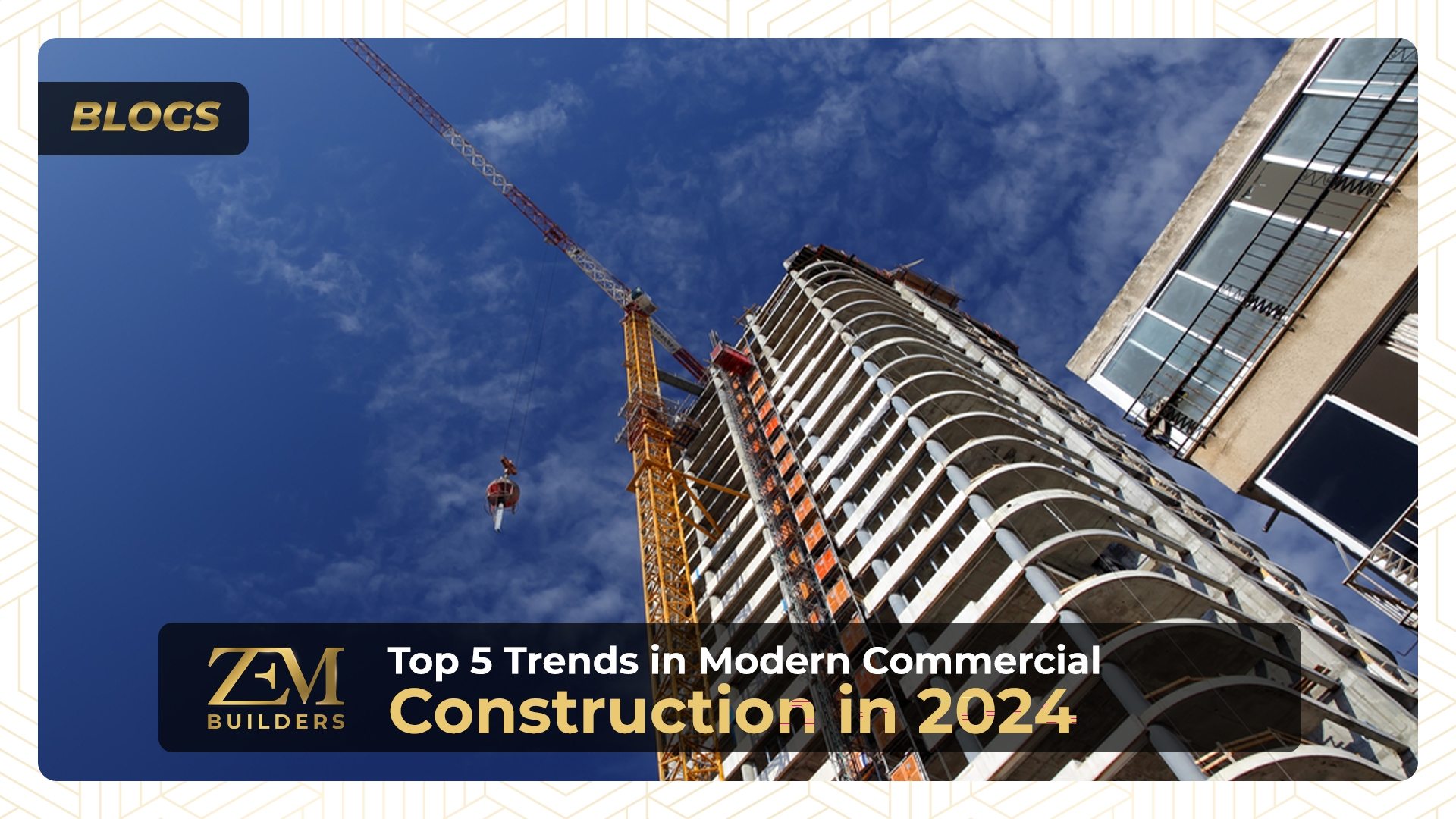Top 5 Trends in Modern Commercial Construction in 2024

In 2024, the commercial construction sector is expected to undergo notable progress. The incorporation of technology, modular building, sustainability, and an emphasis on community-focused initiatives are among the major themes.
An extensive analysis of these patterns is provided below, backed by data, statistics, and industry insights.
Sustainable Construction Practices
Sustainability is still a top priority. It is clear that eco-friendly building materials, energy-efficient designs, and green building certifications are becoming more and more important.
Buildings with net-zero energy, better waste management, and the incorporation of renewable energy sources are all becoming more prevalent.
Innovation is focused on the cement industry, which accounts for 8% of worldwide CO2 emissions. Materials that absorb CO2 during production, such as bio cement and self-replicating concrete, are examples of such materials.
Modular and Prefabricated Construction
The efficiency and affordability of modular and prefabricated construction systems are making them more and more popular.
These techniques expedite project completion, improve quality control, and decrease waste. Modular construction may save costs by 20% and build times by up to 50%, claims the Modular Building Institute.
This trend, which is being used in a variety of projects, from massive commercial structures to residential complexes, responds to the need for quick construction solutions.
Technological Advancements
The construction sector is using more and more advanced technology, like drones, augmented reality (AR), Internet of Things (IoT) devices, and building information modeling (BIM).
These technologies enhance safety procedures, real-time monitoring, design correctness, and project planning. For instance, the use of drones in construction has greatly decreased labor costs and safety hazards while increasing measuring accuracy by 61%.
The use of AI and ML is increasingly essential in solving the most critical issues facing the sector, including labor shortages, delays, and cost overruns.
These technologies are capable of processing massive amounts of data for pattern detection and problem solutions across the whole life of a building project.
Disaster Resistant Construction
With climate change, building resilient infrastructure has become essential. Buildings that are earthquake-proof, resilient to flooding, and employing other construction techniques are becoming more common.
By using these techniques, buildings are guaranteed to be resilient to and recover from natural calamities. With the help of federal funding programs like the Infrastructure Investment and Jobs Act (IIJA), infrastructure investments with the goal of improving resilience are growing significantly, according to Deloitte.
And for that, there must be resistance to the natural disasters. Disaster management in construction is very important.
Focus on Wellness and Safety
After the epidemic, designing environments that prioritize health and wellness has become more important. In order to improve occupant well-being, designs increasingly place a premium on natural lighting, indoor air quality, and bio philic features.
This pattern is part of a larger movement towards environments that promote both mental and physical well-being.
The Global Wellness Institute projects that wellness real estate will increase by 6% a year and reach a market value of $197 billion. In the construction sector, safety is still of utmost importance.
The safety of work sites is being improved by innovations in safety equipment, such as sophisticated helmets and automated machines.
By reducing the requirement for human presence in dangerous regions, the use of drones for site surveys lowers the chance of accidents. The introduction of new technology has resulted in a 55% increase in safety regulations, according to the Occupational Safety and Health Administration (OSHA).
FAQs
What is the current trend in the construction industry?
Answer: Sustainability has become a vital component of the construction industry, and in 2024, this commitment is more pronounced than ever.
Construction companies are adopting eco-friendly practices, incorporating green building materials and implementing energy-efficient technologies to reduce their environmental footprint.
What are the emerging trends and technology in construction?
Answer: With new technologies in place, construction professionals can expect more novel and valuable transformations, backed by augmented reality and virtual reality (AR/VR), drones, robotics, and additive printing.
What is modern building construction?
Answer: Modern methods of construction is a process which focuses on off-site construction techniques, such as mass production and factory assembly, as alternatives to traditional building. The process has been described as a way ‘…to produce more, better quality homes in less time.
Conclusion
The development of flexible, health-focused environments, technology innovations, and sustainability will all be highly valued aspects of the commercial construction sector in 2024. The industry’s dedication to efficiency, innovation, and the welfare of society is reflected in these trends. By adopting these trends, the construction sector will be able to adapt to changing needs and help ensure a sustainable future.

